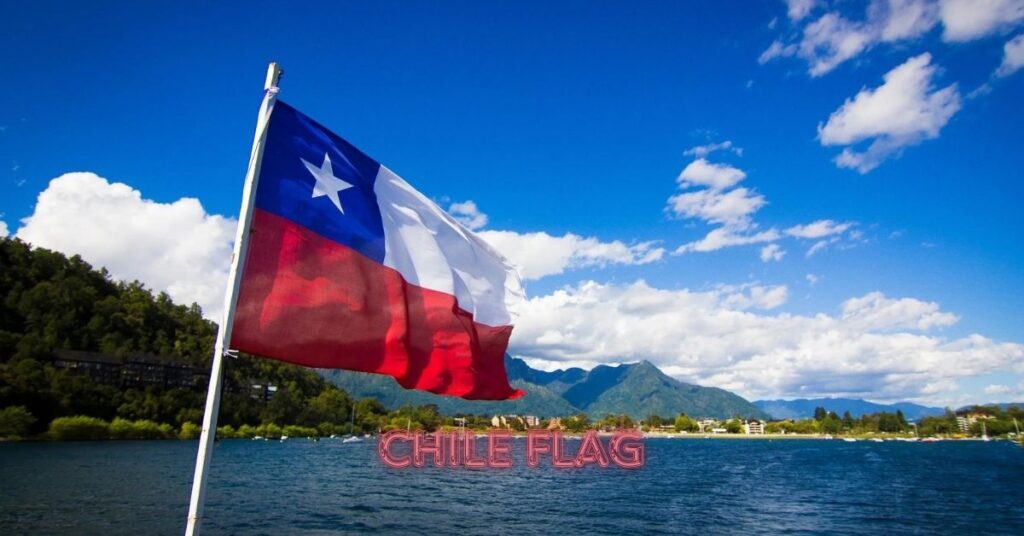Introduction to the Chilean Flag
When you think of the Chile flag, vibrant colors and iconic imagery likely come to mind. This banner not only represents a nation but also embodies its spirit, history, and pride. The Chilean flag is more than just a piece of fabric; it’s a symbol that tells stories of resilience and cultural richness. From its striking design to the emotions it evokes among citizens, understanding the Chile flag provides insight into what makes this South American country unique. Join us as we delve into the fascinating world behind this national emblem!
Historical Significance and Evolution of the Flag
The Chile flag has a rich history that dates back to the early 19th century. Its current design was officially adopted on October 18, 1817, amidst the fervor of independence movements in Latin America.
Before this iteration, various flags represented different regions and factions within Chile. One notable precursor was the “La Estrella Solitaria,” used by revolutionary forces during their struggle against Spanish rule.
The flag’s structure reflects a blend of influences. The blue symbolizes the sky and ocean while white represents snow-capped Andes peaks. The red signifies blood shed for freedom.
Over time, minor adjustments occurred in its presentation, but the core elements remained intact. This resilience speaks volumes about national pride and identity as it evolved alongside Chile itself—through trials, triumphs, and transformation into a democratic nation.
Symbolism and Meaning behind the Flag’s Design
The Chile flag features a striking design that carries deep significance. At its center is a white stripe, symbolizing peace and purity. This represents the aspirations of the Chilean people for harmony within their nation.
Above this stripe sits a blue square with a single white star. The star symbolizes guidance and unity, reflecting the hope for progress and prosperity in Chile. It also serves as an emblem of independence, reminding citizens of their fight for freedom.
The red stripe at the bottom signifies the blood shed by those who fought for liberty and justice throughout history. It encapsulates resilience and sacrifice—a tribute to heroes who paved the way for future generations.
Each element interconnects, creating a narrative about national pride. This simple yet powerful composition makes the Chile flag not just an emblem but also a story woven into fabric that resonates through time.
ALSO READ: Amaziğ Chronicles: Unraveling Cultural Tapestry
Colors and their Representation of Chilean Culture
The colors of the Chilean flag tell a vivid story about the nation’s identity. The white stripe symbolizes the snow-capped Andes mountains, showcasing Chile’s natural beauty and geographical significance.
Red represents the blood shed by those who fought for independence. It reflects courage and resilience, capturing the spirit that defines Chileans throughout history.
Blue stands for the sky and ocean that embrace this long, narrow country along its western edge. This color connects people to their maritime heritage and abundant marine resources.
Together, these colors create a powerful representation of national pride. They evoke emotions tied to nature, sacrifice, and cultural roots in a single glance at the flag. Each hue plays an essential role in fostering unity among Chileans while celebrating their unique characteristics as a nation.
Controversies Surrounding the Flag
The Chilean flag, while a proud symbol for many, has faced its share of controversies. One major point of contention revolves around its design elements. Critics argue that the blue field and white star evoke memories of colonialism. This association can stir feelings about Chile’s past and treatment of indigenous populations.
Another debate focuses on the flag’s representation during political upheavals. In recent protests, some Chileans have chosen to modify or deface the national emblem as a statement against perceived injustices within society. These actions highlight an evolving relationship between citizens and their symbols.
Additionally, discussions arise regarding similar flags in neighboring countries. Some feel that uniformity diminishes uniqueness, igniting prideful arguments over cultural identity.
Despite these tensions surrounding it, the Chile flag continues to spark dialogue about history, unity, and progress among its people.
Fun Facts about the Chilean Flag
The Chile flag, known as the “La Estrella Solitaria” or “The Lone Star,” has some intriguing aspects. For starters, it was officially adopted on October 18, 1817. This date marks a significant moment in Chilean history.
One interesting fact is that the star represents a guide to progress and honor for the nation. It’s positioned prominently against a blue square—a distinctive feature among many national flags.
Interestingly enough, the colors of the flag are also quite symbolic. The white stands for snow-capped mountains; red symbolizes blood shed during battles for independence; while blue reflects the sky and ocean surrounding Chile.
Another fun tidbit: despite its simplicity, the design has inspired various art forms within Chilean culture—ranging from murals to textiles. Each piece showcases national pride through creative expression linked back to this iconic symbol.
ALSO READ: Asianismo: Cultural Fusion in the Digital Age
The Importance of National Flags in Shaping a Country’s Identity
National flags serve as powerful symbols of a nation’s identity. They encapsulate history, culture, and shared values into a simple design that resonates with citizens.
Flags evoke feelings of pride and unity. When people see their flag, it often stirs emotions tied to national achievements or struggles. It acts as a rallying point during both celebrations and crises.
Moreover, flags play an essential role in international recognition. The sight of a familiar flag can foster connections between countries and communities around the globe.
In many cases, national flags are integral to ceremonies and rituals that reinforce cultural heritage. From sporting events to military parades, they signify belonging.
The visual representation on each flag tells its own story—each color and symbol holds meaning unique to the nation it represents. This blend of art and history makes them not just pieces of fabric but vital components of national identity.
conclusion
The Chile flag is more than a piece of cloth fluttering in the wind. It represents a rich tapestry of history, culture, and national pride. From its historical roots to the symbolism woven into its design, each aspect tells a story about the Chilean people and their journey.
Understanding the colors and symbols encourages deeper appreciation for what they signify in everyday life. Despite occasional controversies surrounding it, the flag remains an enduring emblem that unites citizens under common ideals and aspirations.
As we explore national flags like that of Chile, we see how these designs shape identities and foster connections among people. They are not just identifiers but also storytellers—each line and color holding meaning in every fold. The Chile flag stands as a proud testament to this legacy, embodying hope for future generations while honoring those who came before them.
ALSO READ: Unveiling Opeño: Michoacán’s Hidden Jewel
FAQs
What is the origin of the Chilean flag?
The Chilean flag was first raised on February 12, 1818, during the country’s independence movement. It was designed by Jose Ignacio Zenteno, a member of the First National Assembly.
Why does the Chilean flag have a white star?
The white star on the Chilean flag represents honor and progress, symbolizing the guiding light towards a brighter future for the nation.
Are there any rules for displaying the Chilean flag?
Yes, according to Chilean law, the national flag must always be displayed in a clean and undamaged state, with its colors and proportions correctly represented.
Has the design of the Chilean flag ever changed?
Yes, there have been several modifications to the design of the Chilean flag since its creation in 1818. The most recent change was in 1990 when the size and position of some elements were adjusted.
Is it considered disrespectful to alter or deface the Chilean flag?
Yes, altering or defacing any national symbols, including flags, is considered disrespectful and can result in legal consequences in Chile.







